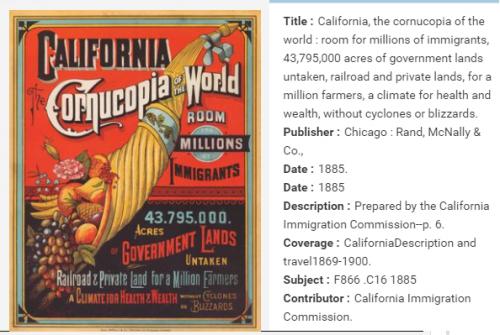 1
1 Answer: B. the uncontrollable power of nature.
In this passage, we can see how powerful the colossal Moby-Dick is, and how frail and insignificant humans appear to be by comparison. When Ahab wants to fight with the whale, he is completely helpless and is easily defeated and injured. The power of the whale is a symbol that represents the incontrollable power of nature.
 1
1 Answer:
Louis Daguerre's motivation to begin experimenting with light sensitive materials was so that he and others would be able to capture an image from a still moment in timeStep-by-step explanation:
Early photography and Daguerreotype Medium.
Louis Daguerre invented a new process he dubbed a daguerrotype in 1839, which significantly reduced exposure time and created a lasting result, but only produced a single image.
Louis Daguerre called his invention "daguerreotype." His method, which he disclosed to the public late in the summer of 1839, consisted of treating silver-plated copper sheets with iodine to make them sensitive to light, then exposing them in a camera and "developing" the images with warm mercury vapor.
Daguerreotypes became an equalizer among classes. No longer were likenesses only created for the super rich. An average person could walk into a portrait studio, sit for an image, and have the same product as the millionaire down the street. The popularity gave rise to picture factories
Views of modernity and capitalism heavily influenced Daguerre’s discovery because his main goal was to improve and modernize the process previously used to capture images and to upgrade what he saw using camera obscura.
People could start to develop a visual history, not only the rich could afford to have a portrait made, and people could collect images of their friends and family.

Answer:
Answer explained in detail below.Step-by-step explanation:
In the passage "Boston Navy Yard and the 'Great War,' 1914-1918," the author presents a detailed account of the history of the Boston Navy Yard, specifically focusing on its transformation during World War I. The author develops the significance of this transformation by providing historical context, describing specific events and changes at the Navy Yard, and highlighting the impact of the Yard's actions on the war effort.
The author begins by providing historical context for the Boston Navy Yard, describing its establishment in 1801 and its role as a major naval shipyard for the United States. This sets the stage for the significance of the Yard's transformation during World War I, as it was a key player in the war effort.
The author then describes specific events and changes that occurred at the Navy Yard during the war. For example, the author notes that the Yard's workforce grew from 2,500 workers to over 20,000, and that the Yard's production of ships and submarines increased dramatically. The author also describes how the Yard adapted to the changing needs of the war, such as by building subchasers and convoy escort ships.
The author also highlights the impact of the Yard's actions on the war effort. For example, the author states that the Yard's production of destroyers and submarines helped to tip the balance of the war in favor of the Allies. The author also notes that the Yard's actions played a significant role in the success of the convoy system, which helped to protect supplies and troops being transported across the Atlantic.
Overall, the author develops the significance of the Boston Navy Yard's transformation during World War I by providing historical context, describing specific events and changes at the Navy Yard, and highlighting the impact of the Yard's actions on the war effort. This information provides a clear understanding of the importance of the Navy Yard in the war and its impact on the outcome of the war.
 1
1 Answer:
According to the students learn in different ways such example as games, animations, family, and the school etc.Step-by-step explanation:
The term student refers to learn the knowledge and the development of the body. They also the gain the experience. The students are the learn as the under the guidance of the teacher. The teacher is the teach to the students. The student is the learn on the different ways to the consumption of the different knowledge.
According to the student are the learn on the different ways are;
Animation video to the easily describe the concept and the remember to the easy in the task.
Games are the learn to mistakes not to repeated.
Family are the firstly teach to the student.
School are the teacher to the guide in the career.
As a result, the student is the learn on the different in the way.
Answer:
In lines 578-579, Mrs. Keeney tells her husband why she wanted to sail with him: "I wanted to seeStep-by-step explanation:
make necessary changes as required to make the points better
Lange’s work was significantly influenced by her experiences.
Answer:
Please, see below:Step-by-step explanation:
Based on the context of the presented proposal, we can give such a definition:
Reverence is a feeling of deep respect or awe, in this case for nature. Reverence can be a feeling of awe, and it can also describe how you feel about something, especially.
Answer:
Answer is in an imageStep-by-step explanation:


Answer:
This phrase means that Rip Van Winkle's son took the time and did anything but his business.Step-by-step explanation:
"To make a long story short, the company broke up, and returned to the more important concerns of the election. Rip's daughter took him home to live with her ; she had a snug, well-furnished house, and a stout, cheery farmer for a husband, whom Rip 660 recollected for one of the urchins that used to climb upon his back. As to Rip's son and heir, who was the ditto of himselt, seen leaning against the tree, he was employed to Avork on the farm ; but evinced a hereditary disposition to attend to anything else but 665 his business."

It will provide an instant answer!
